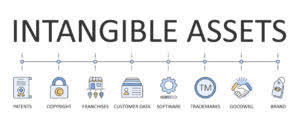Operating Cycle Formula What Is It, How To Calculate, Examples

On the other hand, companies that sell products or services that do not have shorter life spans or require less inventory tend to be less efficient in terms of operational processes. For example, an efficient sales force can increase the company’s market share and reduce the time it takes to acquire new customers. https://www.bookstime.com/ This, in turn, helps you determine how much time and resources need to be allocated to collecting bad debt.
Operating Cycle Formula: The Only Guide You’ll Need!
- It equals the time taken in selling inventories (days inventories outstanding) plus the time taken in recovering cash from trade receivables (days sales outstanding).
- When she started paying for the supplies to produce various clothes, her company’s operating cycle would begin.
- Inventories are predominantly sold on credit which means the company must wait a certain number of days till it receives cash from customers.
- A shorter operating cycle is preferable since it indicates that the company has sufficient cash to sustain operations, recover investments, and satisfy other obligations.
- While both are useful and provide vital knowledge, a cash cycle allows businesses to understand how well they manage cash flow, whereas an operating cycle determines the efficiency of the operation.
- An increased operating cycle can result from slower inventory turnover, longer times to collect payments from customers, or delays in paying suppliers.
One of the primary challenges is dealing with extended payment terms from customers. While offering credit can attract customers, excessively long payment terms can delay cash collection, elongating the operating cycle and impacting cash flow. Timely information about it provides valuable insights into the company’s financial health and operational efficiency.
BUDGETARY: Meaning of Budgetary In Accounting

Keeping pace with rapid technological changes is a challenge in today’s business landscape. Implementing and adapting to advanced technologies for inventory management, order processing, and automation is essential for optimizing the operating cycle. Offering credit to customers introduces the risk of late payments or non-payment, contributing to bad debt. Managing credit risk effectively requires a balance between attracting customers and mitigating the potential financial impact of uncollectible receivables. One of the best examples of a company with the ideal operational efficiency is Toyota. Toyota’s production system utilizes a lean manufacturing system which reduces waste and continuously improves the inventory system by constantly evaluating it.
Improved Liquidity

Although they are both useful calculations for a business, the insights differ widely. Cash cycles usually analyze the cash flow in much more depth and tell a company how well they can manage their cash flow, while an operating cycle involves how efficiently the stock flows in and out. A low DSO suggests that your accounts receivable process is efficient, and customers are paying their invoices promptly. This helps maintain a steady cash flow, reduces the risk of bad debts, and ensures you have funds available for immediate use or investment. Before we dive into the mechanics of calculation, we need to know what we’re dealing with. An operating cycle can be understood as the average time a business takes to make a sale, collect the payment from unearned revenue the customer, and convert the resources used into cash.
- To reduce your DSO, focus on efficient accounts receivable practices, including clear credit policies, prompt invoicing, automated reminders, regular reconciliation, and offering early payment incentives.
- The operating cycle formula adds the days inventory outstanding to the days inventory outstanding.
- Divide the price of products sold by the average inventory ratio to find a firm’s turnover ratio.
- Also, comparing a company’s current operating cycle to its previous year can help conclude whether its operations are on the path of improvement or not.
- Calculating this cycle plays a significant role in assessing the efficiency of a business.
- One crucial concept that encapsulates the rhythm of a company’s operations is the operating cycle.

Strategic partnerships with suppliers to ensure a steady and reliable supply chain. Also, high inventory turnover can reflect a company’s efficient operations, which in turn lead to increased shareholder value. For example, the net accounts receivable turnover is used to determine how often customers must pay operating cycle formula for their product before they can make another purchase. This is computed by dividing 365 with the quotient of credit sales and average accounts receivable or receivable return. Accounts Receivable Period is equal to the number of days it takes to receive payment for goods and services sold. The length of a company’s operating cycle can impact everything from their ability to finance new growth initiatives to the interest rates they’re offered on loans.
